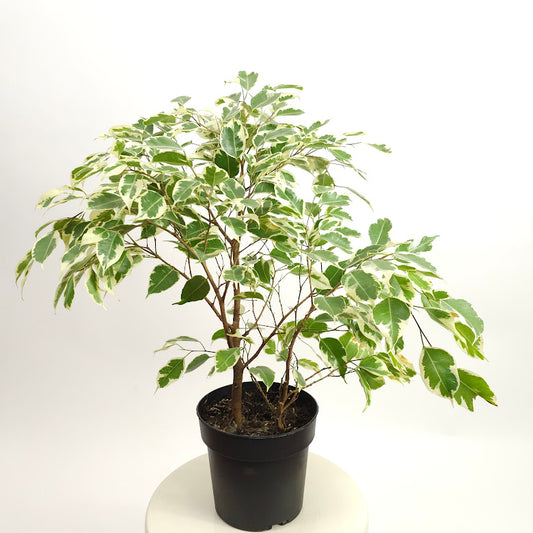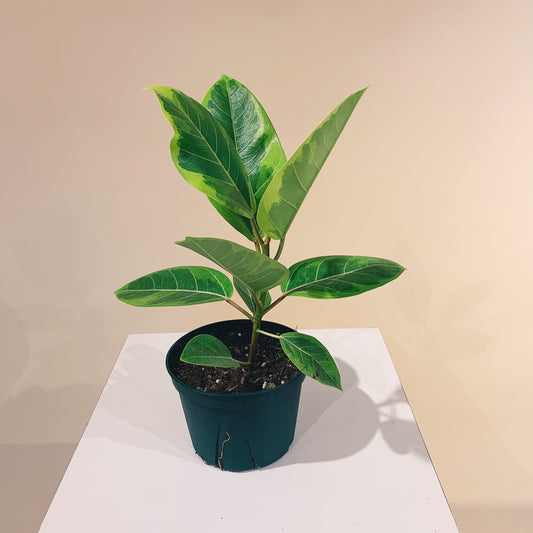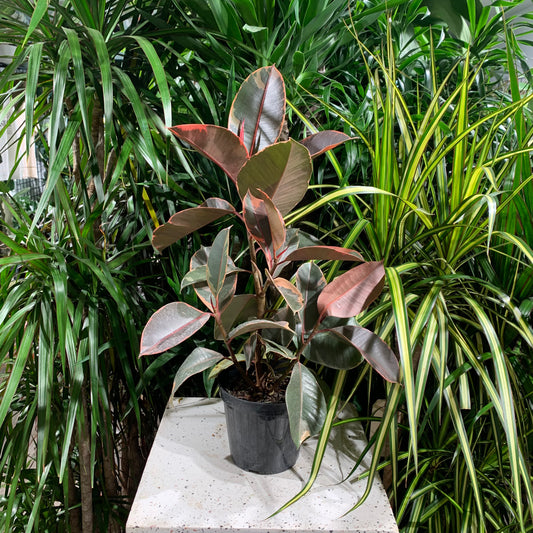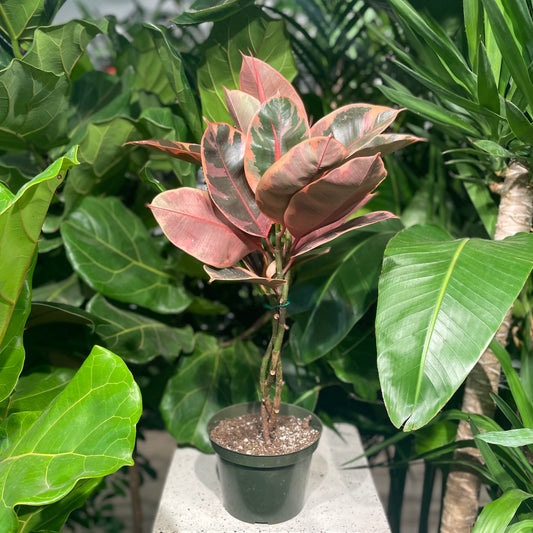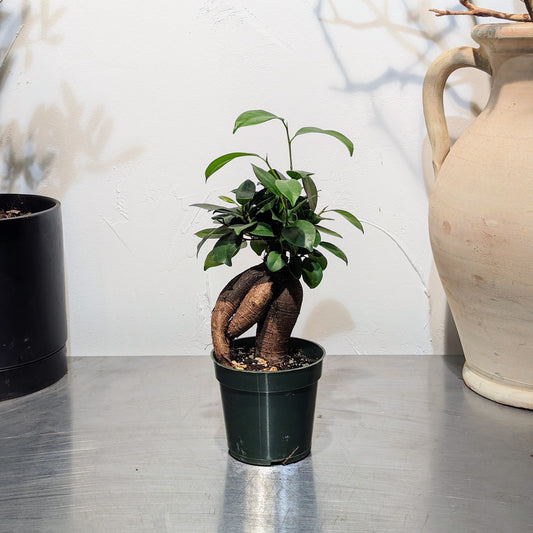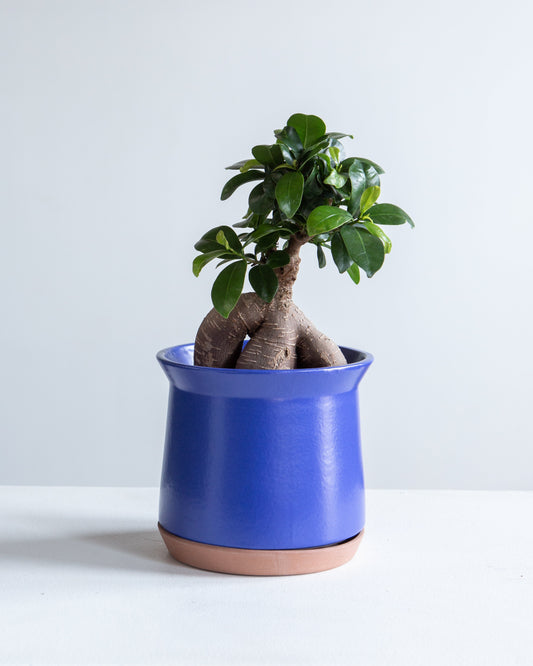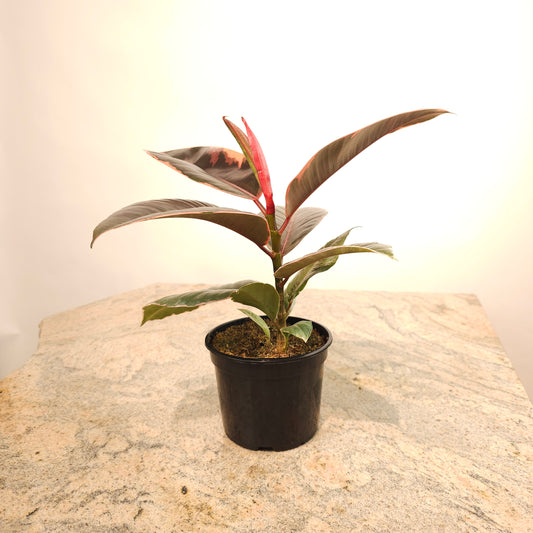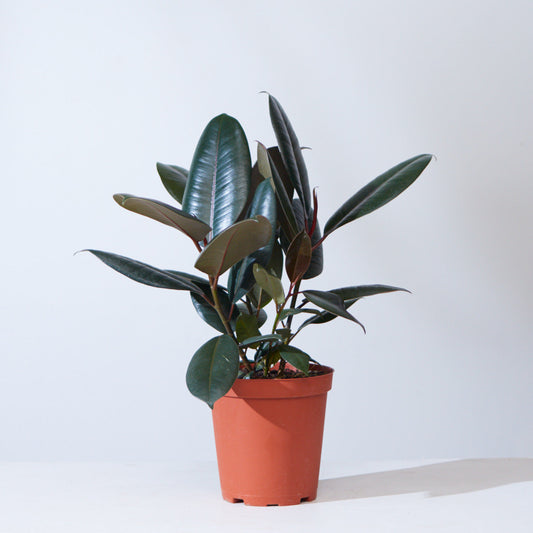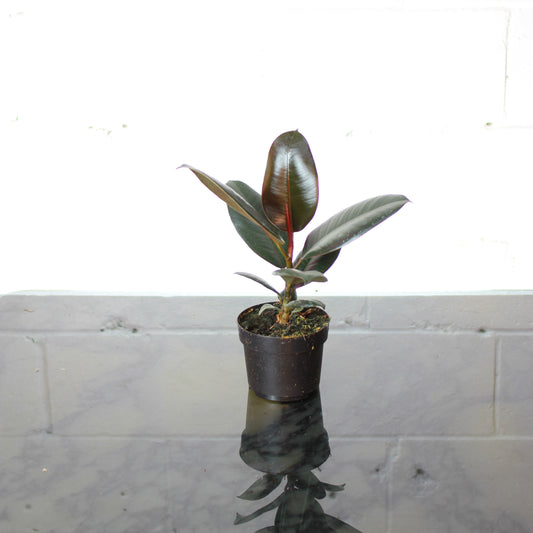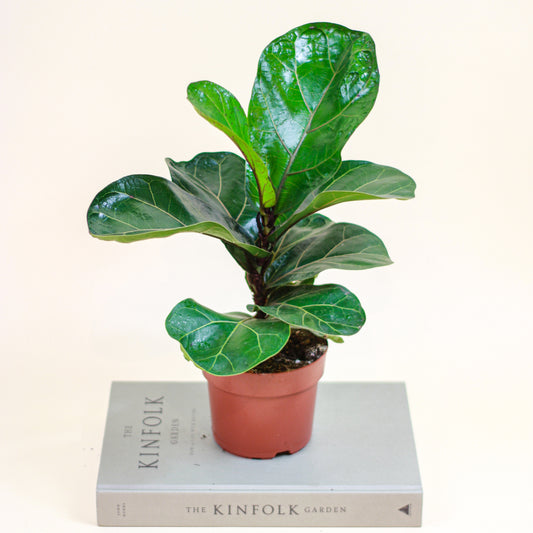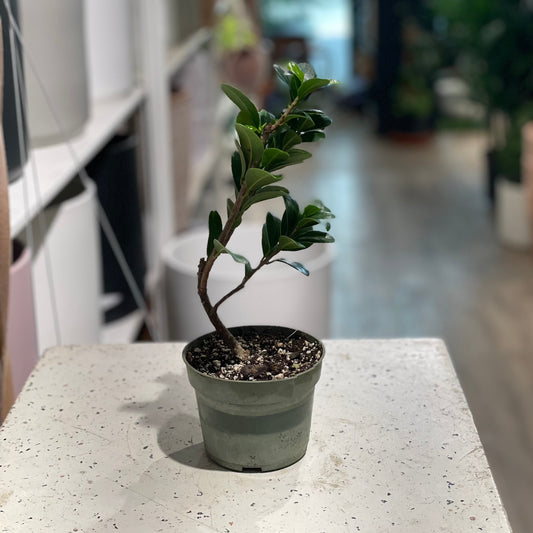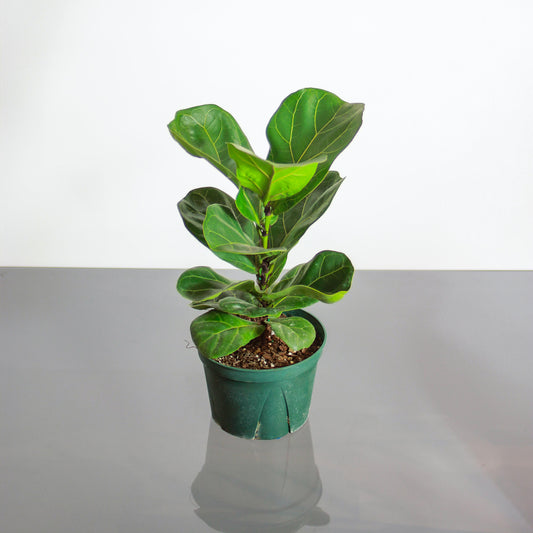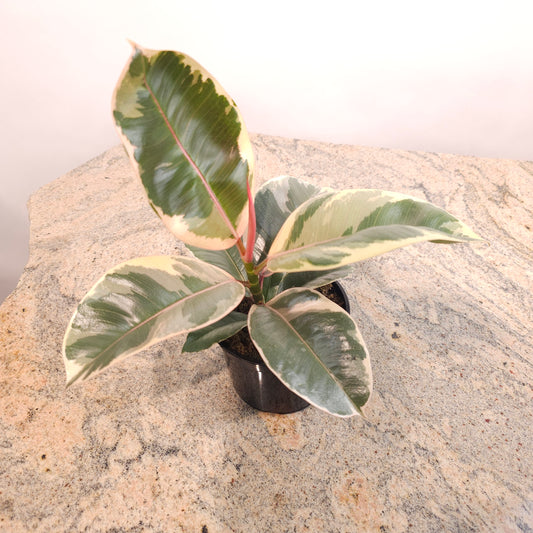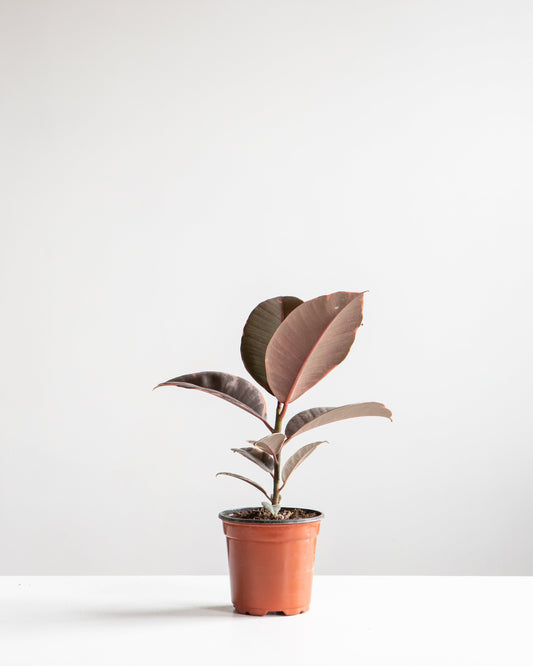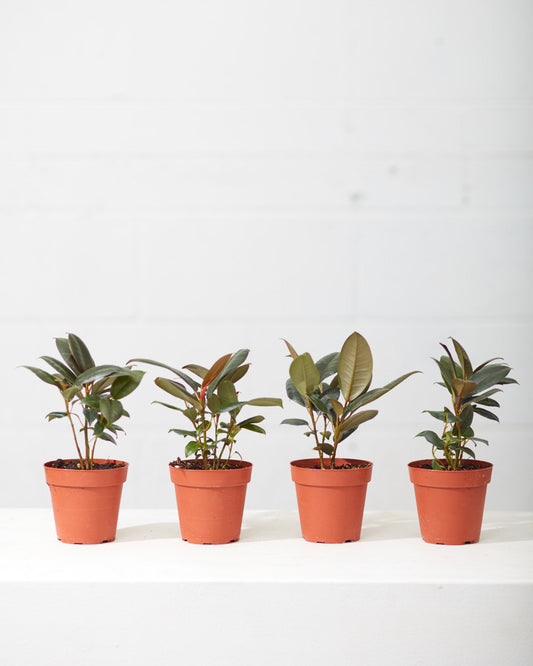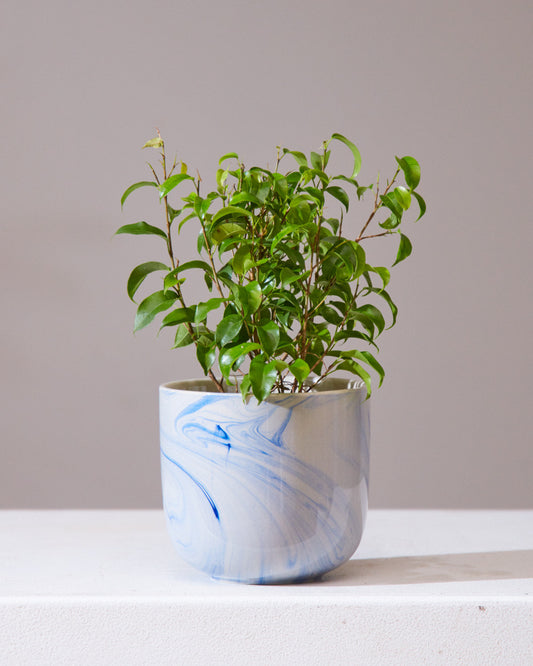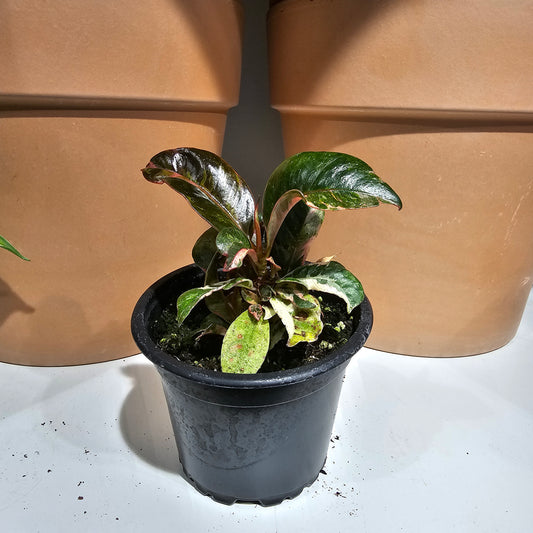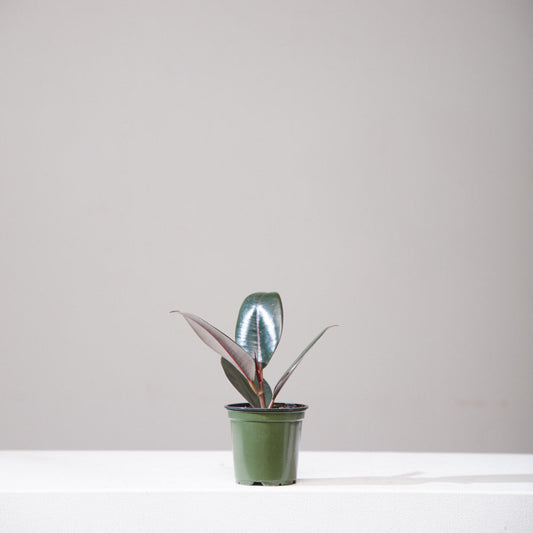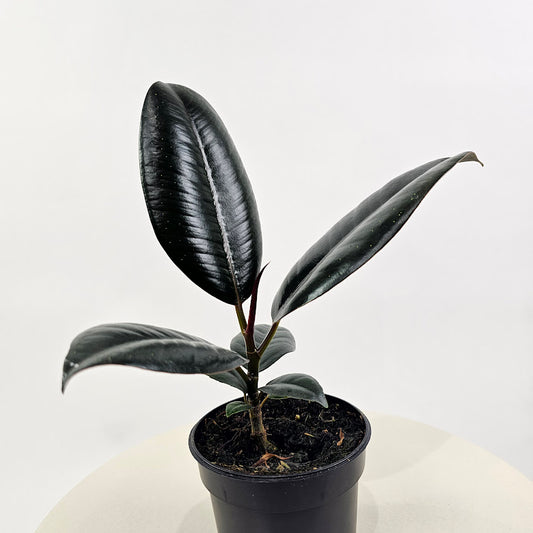Plants: Ficus | Rubber Trees, Weeping Figs, Moclame's and more
Discover indoor plants for pickup in downtown Toronto and delivery in the Greater Toronto Area.
Collapsible content
3 SECRETS TO SUCCESSFULLY SELECTING PLANTS
1. Determine the light it will receive
If you have a south or west-facing window, it will get direct sun.
If you have an east or west-facing window, you have bright light.
If you have a north-facing window, or your plant won't be close to the window, you have shade.
Learn more about light: The Right Light for Indoor Plants: Direct Sun, Bright Indirect and Shade
2. Decide how often you'll water it
Most plants need water about once a week. Some are drought-tolerant, and others want to get watered almost daily.
Plants don't get water on a schedule in the wild, and you don't need to stick to a tight schedule indoors. Just make sure you know if it prefers to stay moist, wants to dry out halfway, or likes to dry out completely between watering.
Learn more about watering: Watering your plants how to keep indoor plants happy
3. Dial in the humidity as needed
For most spaces, if you put a plant near a vent, the air will be dry. If you have a humidifier or an essential oil diffuser nearby, that can help make it humid. Some plants don't mind dry air, and others will drop their leaves.
-

Plants: Low Light Tolerant
Although we don't recommend putting these plants in a room with no...
-

Pet Friendly Plants
These are plants that are safe for your cats and dogs!
-
Danielle Weeping Fig: Ficus benjamina - 6.75 inch pot
Regular price $40.00 CADRegular priceUnit price / per$40.00 CADSale price $40.00 CADSold out -
Tineke Rubber Plant: Ficus elastica - 6.75 inch pot
Regular price $40.00 CADRegular priceUnit price / per$40.00 CADSale price $40.00 CADSold out -
Variegated Weeping Fig: Ficus benjamina - 7 inch pot
Regular price $35.00 CADRegular priceUnit price / per$35.00 CADSale price $35.00 CADSold out -
Variegated Natal Fig: Ficus triangularis - 6 inch pot
Regular price $35.00 CADRegular priceUnit price / per$35.00 CADSale price $35.00 CADSold out -
Burgundy Rubber Plant: Ficus elastica - 6 inch pot
Regular price $35.00 CADRegular priceUnit price / per$35.00 CADSale price $35.00 CADSold out -
Yellow Gem Fig: Ficus altissima - 6 inch pot
Regular price $35.00 CADRegular priceUnit price / per$35.00 CADSale price $35.00 CADSold out -
Tineke Rubber Plant: Ficus elastica - 6 inch pot
Regular price $35.00 CADRegular priceUnit price / per$35.00 CADSale price $35.00 CADSold out -
Ginseng Ficus Bonsai: Ficus retusa - 6 inch pot
Regular price $30.50 CADRegular priceUnit price / per$48.00 CADSale price $30.50 CADSold out -
Ruby Rubber Plant: Ficus elastica - 6 inch pot
Regular price From $30.00 CADRegular priceUnit price / per$30.00 CADSale price From $30.00 CADSold out -
Braided Ruby Rubber Plant: Ficus elastica - 6.75 inch pot - 1-2 foot tall
Regular price $30.00 CADRegular priceUnit price / per$30.00 CADSale price $30.00 CADSold out -
Ginseng Ficus Bonsai: Ficus retusa - 4 inch pot
Regular price $25.00 CADRegular priceUnit price / per$25.00 CADSale price $25.00 CADSold out -
Ruby Rubber Plant: Ficus elastica - 5 inch pot
Regular price $25.00 CADRegular priceUnit price / per$25.00 CADSale price $25.00 CADSold out -
Variegated Starlight Weeping Fig: Ficus benjamina - 6 inch pot
Regular price $25.00 CADRegular priceUnit price / per$25.00 CADSale price $25.00 CADSold out -
Neon Marguerite Weeping Fig: Ficus benjamina - 6 inch pot
Regular price $25.00 CADRegular priceUnit price / per$25.00 CADSale price $25.00 CADSold out -
Burgundy Rubber Plant: Ficus elastica - 5 inch pot
Regular price $25.00 CADRegular priceUnit price / per$25.00 CADSale price $25.00 CADSold out -
Small Leaf Fiddle Leaf Fig: Ficus lyrata 'Bambino' - 5 inch pot
Regular price $25.00 CADRegular priceUnit price / per$25.00 CADSale price $25.00 CADSold out -
Ficus Moclame Bonsai: Ficus microcarpa - 4 inch pot
Regular price $22.50 CADRegular priceUnit price / per$22.50 CADSale price $22.50 CADSold out -
Small Leaf Fiddle Leaf Fig: Ficus lyrata 'Bambino' - 6 inch pot
Regular price From $12.25 CADRegular priceUnit price / per$30.00 CADSale price From $12.25 CADSold out -
Tineke Rubber Plant: Ficus elastica - 4 inch pot
Regular price $12.00 CADRegular priceUnit price / per$12.00 CADSale price $12.00 CADSold out -
Ruby Rubber Plant: Ficus elastica - 4 inch pot
Regular price $12.00 CADRegular priceUnit price / per$12.00 CADSale price $12.00 CADSold out -
Green Rubber Plant: Ficus elastica - 4 inch pot
Regular price $10.00 CADRegular priceUnit price / per$10.00 CADSale price $10.00 CADSold out -
Dwarf Weeping Fig Tree: Ficus benjamina 'Little Leaf' - 4 inch pot
Regular price From $10.00 CADRegular priceUnit price / per$10.00 CADSale price From $10.00 CADSold out -
Moonshine Ficus: Ficus elastica 'Shivereana' - 4 inch pot
Regular price $10.00 CADRegular priceUnit price / per$10.00 CADSale price $10.00 CADSold out -
Ficus Audrey: Ficus benghalensis - 4 inch pot
Regular price $10.00 CADRegular priceUnit price / per$10.00 CADSale price $10.00 CADSold out -
Burgundy Rubber Plant: Ficus elastica - 4 inch pot
Regular price $10.00 CADRegular priceUnit price / per$10.00 CADSale price $10.00 CADSold out
Collection: Plants: Ficus | Rubber Trees, Weeping Figs, Moclame's and more
Ficus is a genus of trees, shrubs, and vines occupying a wide variety of mostly evergreen plants. Ficus lyrata, ficus elastic, ficus benjamina are well-known and common family members in a big family with over 850 species.
Specific identification of many species can be difficult, but members of the genus Ficus are relatively easy to recognize. Many have aerial roots and a distinctive shape or habit, and their fruits distinguish them from other plants.
They produce fruit, yes all of them, that are often important bush food for many animals in the wild. In essence, the fig fruit is a fleshy stem with multiple tiny flowers that fruit and coalesce.
Current molecular clock estimates indicate that Ficus is a relatively ancient genus being at least 60 million years old and possibly as old as 80 million. However, the main radiation of current species may have taken place more recently, between 20 and 40 million years ago.








